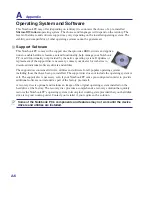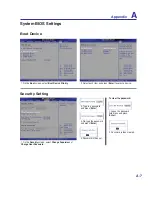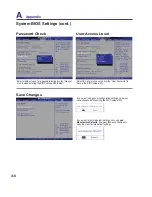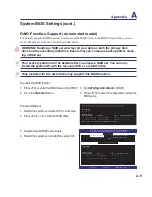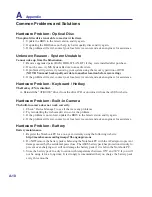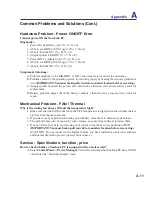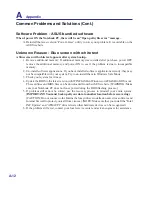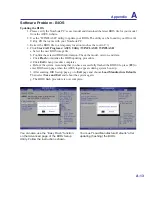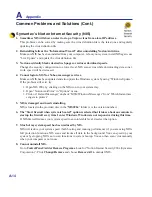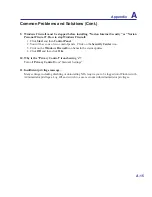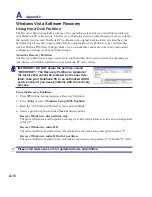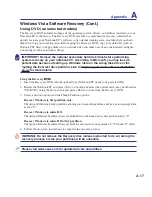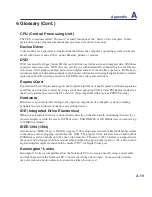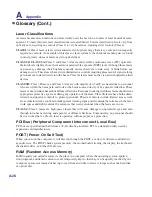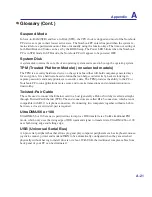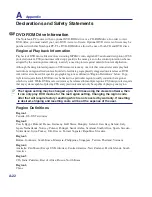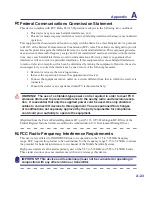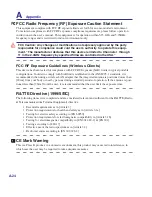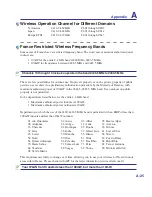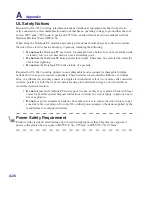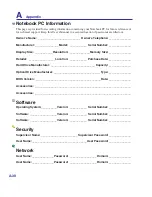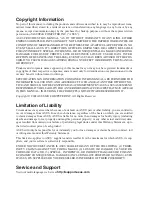
A
Appendix
A-20
Glossary (Cont.)
Laser Classifications
As lasers became more numerous and more widely used, the need to warn users of laser hazards became
apparent. To meet this need, laser classifications were established. Current classification levels vary from
optically safe, requiring no controls (Class 1) to very hazardous, requiring strict controls (Class 4).
CLASS 1:
A Class 1 laser or laser system emits levels of optical energy that are eye-safe and consequently
require no controls. An example of this class of laser system is the checkout scanning device found
in most grocery stores or lasers used in optical drives.
CLASS 2 & CLASS 3A:
Class 2 and Class 3A lasers emit visible, continuous-wave (CW) optical ra-
diation levels slightly above the maximum permissible exposure (MPE) level. Although these lasers
can cause eye damage, their brightness usually causes observers to look away or blink before eye
damage occurs. These lasers have strict administrative controls requiring placement of signs warning
personnel not to stare directly into the beam. Class 3A lasers must not be viewed with optically-aided
devices.
CLASS 3B:
Class 3B lasers, and Class 3A lasers with outputs of 2.5mW, are hazardous to personnel
who are within the beam path and look at the beam source directly or by specular reflection. These
lasers cannot produce hazardous diffuse reflections. Personnel working with these lasers should wear
appropriate protective eye wear during any operation of the laser. Class 3B lasers have both admin-
istrative and physical controls to protect personnel. Physical controls include limited access work
areas. Administrative controls include special warning signs posted outside the entrances to the laser
work spaces and lights outside the entrances that warn personnel when the lasers are in use.
CLASS 4:
Class 4 lasers are high-power lasers that will cause damage to unprotected eyes and skin
through intra-beam viewing and specular or diffuse reflections. Consequently, no personnel should
be in a room where a Class 4 laser is operating without proper eye protection.
PCI Bus (Peripheral Component Interconnect Local Bus)
PCI bus is a specification that defines a 32-bit data bus interface. PCI is a standard widely used by
expansion card manufacturers.
POST (Power On Self Test)
When you turn on the computer, it will first run through the POST, a series of software-controlled di
-
agnostic tests. The POST checks system memory, the motherboard circuitry, the display, the keyboard,
the diskette drive, and other I/O devices.
RAM (Random Access Memory)
RAM (usually just called memory) is the place in a computer where the operating system, applica-
tion programs, and data in current use are temporarily kept so that they can be quickly reached by the
computer’s processor instead of having to read from and write to slower storage such as the hard disk
or optical disc.

